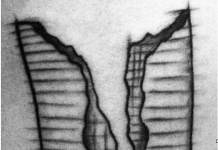The island of Cyprus is a place of many wonders where past and present perfectly intertwine creating an enchanting atmosphere. Throughout the centuries, Cyprus has seen many populations and cultures that have left a long-lasting mark among the streets and buildings of different cities.
Discovering the rich heritage of this country is a fascinating and enlightening journey. From old settlements to well-preserved architectural sites, Cyprus offers the possibility to explore various routes that will lead you back to ancient times and will give you the chance to immerse yourself in stories of heroes and myths.
Starting from the most ancient of them all, the island of Cyprus is considered to be the birthplace of the Goddess Aphrodite. According to the myth, Aphrodite emerged from the foam of the sea at the site of Petra tou Romiou. It is said that if you swim around the rock three times you will receive a blessing that could be eternal youth and beauty, good luck, fertility and true love. So, if you ever find yourself on this beautiful beach, remember to give it a try! Moreover, you can follow the natural trail that will lead you to the charming location of the Bath of Aphrodite in the Akamas Peninsula, a natural grotto where the Goddess would bath and where she met for the first time her lover Adonis.

All over the island it is also possible to follow in the footsteps of the Goddess and discover the archaeological sites dedicated to her ancient cult. In particular, you can embark on a journey through the sites of Palaipafos, the ancient city kingdom of Amathus and Kition, where artefacts related to the Goddess endure to this day.
Moving on through the ages, the island of Cyprus offers a rare insight into the lives and stories of its ancient inhabitants through the ruins of Roman cities and medieval castles. The archaeological site of Kourion paints the tales of the homonym city-kingdom built around the 2nd century B.C. Here you will find a perfectly preserved Greco-Roman amphitheatre, a Roman agora as well as different mansions decorated with stunning mosaics and many more traces of a vibrant city that once was.

Travelling north along the coast, you will encounter the Pafos Archaeological Park located in Kato Pafos. Included in the UNESCO World Cultural Heritage catalogue since 1980, the site is renowned for its buildings and monuments from the prehistoric era until the medieval times, with the majority of ruins dating back to the Roman period. Walking between the remains, you will be able to admire the famous mosaics adorning five villas that depict scenes from Greek mythology and the ancient Odeum in the heart of the old Pafos Acropolis. However, the Romans were not the only ones leaving their footprint in the area. As a matter of facts, in the Archaeological Park it is possible to appreciate the ruins of the Saranta Kolones, an ancient castle built in the 7th century by the Byzantines to protect the city from the Arab invasion. The castle was subsequently destroyed during an earthquake, but it is still possible to explore parts of it like the dungeons and the towers.

Situated two kilometres northwest of the Pafos Harbour, there are the Tombs of the Kings, a large necropolis with unique courtyard-built tombs inspired by the Egyptian style. Although no actual kings were buried there, in reality they were the tombs of Ptolemaic aristocrats, the site has a remarkable historical value with its different varieties of tombs.

These are just few of the countless historical sites that Cyprus has to offer to its visitors. So, when planning your next visit to this fascinating island make sure to include at least a few of the archaeological areas and let yourself be transported to these ancient worlds.

















